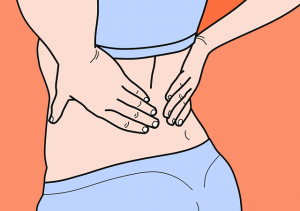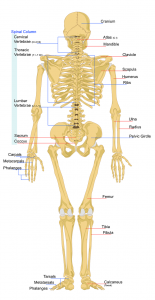Physical Therapy Treatment For Low Back Pain
Philadelphia is flush with options for treatment of low back pain. Some of these options are good but others will not help you. Although a search may fail you as outlined in this previous article there are a number of treatments that have been shown effective to help those with low back pain. Other treatments have been shown ineffective with a number of risks. There is a reason why there are so many treatment options for low back pain. It is both common and the cause is difficult to pinpoint even with x-ray and MRI. Physical therapy treatment for low back pain revolves around your response and PT does not just mean exercise.
Cause Unknown
If anyone ever tells you they know what structure is the cause of your back pain you should get a second opinion. This is because many “problems” that are found on either x-rays or MRIs are actually very common. Herniated discs, degeneration, and nerve impingement are all very common in people who have not had back pain in over 6 months. This comes as a surprise to many people but the image often does not explain symptoms and those who treat the anatomy have had problems compared to other treatments.
But What If It Is The Anatomy
The anatomy may not be fully discounted however as there are some people who have severe symptoms, such as a major loss in strength that occurs quickly (days or weeks). If their image matches with their symptoms treatment of the anatomy (through surgery or medication) can be an option. For the majority of people however these symptoms are not the norm. Tingling, numbness, and pain are not reasons to jump to treatment of the anatomy. This is because most people have things on an MRI and x-ray which is normal and may have nothing to do with their low back pain.
Physical Therapy Can Help
Despite anatomy not able to determine the treatment a person needs there is still a number of options. Research has shown that physical therapy treatment for low back pain with a basis around your symptoms, length of pain, and response to trial treatment is effective in pain reduction. These treatments include: joint movements (mobilizations), specific movements, exercise, traction, nerve glides, graded exercise, and dry needling.

Joint Mobilizations
Joints feel better with movement. The effects have been shown to benefit people for 15 minutes up to 24 hours (Bialosky, 2009.) These effects help you move more and reduce your pain to help you recover. This is why people with good hip motion, some lack of motion in their spine, symptoms starting less than 2 weeks ago, minimal fear of movement, and no nerve pain that goes past the knee can get better fast. In a study these people (Flynn, 2002) felt a great deal better in less than 3 visits. This study has held up well and people with these symptoms benefit from mobilization as a part of their physical therapy treatment for low back pain and there are a number of reasons why.
Hip Motion
Hip motion is important to determine if joint mobilizations are right for you as people need to have some motion to relax into. If they do not have the motion in their hip they may be stiff and tight normally and a technique to relax the muscles and help them move may not be the solution. This is why good hip motion helps us know if someone will benefit from joint mobilization. If you usually have good hip mobility but find that you are now much stiffer you may benefit from mobilization.
Lack Of Spine Motion
People that have a reduction in movement of their spine seem to benefit from mobilization. This may be because people who have a lot of motion in their spine see little benefit from a mobilization to help the spine relax and move better. Spine motion does not have to be rigid but some normal stiffness that is common in most people helps the PT know if joint mobilization is right for you.
Symptoms Less Than 2 Weeks
If you have acute symptoms, those less than 6 weeks, you will see better recovery than those who have had long standing symptoms. When someone has symptoms for only 2 weeks recovery occurs when you help the back move out of its protective phase. By relaxing the muscles that guard the spine and prevent movement the spine can relax and move better. This helps reduce pain in those who have only had pain for a couple weeks.
Nerve Feels Good
Nerve pain takes longer to recover and is a common structure that causes back. Pain with symptoms down the leg below the knee means the nerve is a reason for the pain. Nerves like movement but do not seem to like joint mobilization. People with nerve pain, also known as sciatica, need other treatment specific for their nerve.
Willing To Move
People who fear movement when they have back pain tend to not respond well to mobilization. Even after all bad things have been shown to not be an issue some people still have fear. These people need education and a gradual approach to treatment which physical therapy can provide. If you present with a large concern about injury with movement joint mobilization may not be for you.

Specific Movements
Movement of the spine tends to help the back feel better. For some people the spine needs to limit motion in directions that increase pain while they work with motion that decrease pain. This is where treatment with specific exercise helps people recover from low back. The spine has three planes of motion. It moves front to back, tilts side to side, and turns side to side. Any one of the movements can be helpful and your PT can help you determine if specific movements are right. Extension and flexion are the most common (Long, 2004) This treatment gives you more control of your symptoms during the day.
Extension
Extension is the most common specific movement. This may be because most of us sit and bend all day. If you sit, wash dishes, drive, brush your teeth, and curl up in a ball to sleep at night you already spend most of your day in flexion (bent forward). This is one of the reasons people think extension helps reduce pain in most people who need a specific movement to help them recover.
Flexion
The second most common specific movement is flexion. Although far less common people who have back pain primarily with walking and standing may need flexion. These people tend to feel better when they sit or drive. People who benefit from specific movements tend to have a rapid reduction in pain. Other motions can also be helpful but only with a full exam can a physical therapist determine the best movement for your low back pain.
Exercise
Most people find relief from back pain when they exercise. Exercise can come in many forms. General and targeted “core” exercises both have a benefit as do exercise classes. This is why yoga and pilates both have good results in the reduction of back pain. Regardless of your exercise of choice most people see the most relief with consistent exercise for their back pain. Physical therapy treatment for low back pain has a basis in exercise.
General Exercises
Exercise in general has been found to be helpful in many studies on the treatment of low back pain. This means that many people do not need a targeted exercise approach or specific movement to recover. Movement is all that is required. This can come in the form squats, walking, running, or moving against resistance. Any exercise that helps the spine move can help the low back feel better. This helps lead to pain reduction and will help you feel better.
Targeted “Core” Exercises
Most people feel they have a weak “core” or trunk that is the reason they have back pain. Because so many different forms of exercise have been shown to benefit people with back pain this may not be the case. Although some people need to learn how to use their muscles to move the evidence shows targeted core exercises are no more effective at back pain relief than general exercise (Saner, 2015.) You can not go wrong with exercise when it comes to low back pain but at times exercises that target specific muscles may help you more than general exercise. Every person is different.
Yoga & Pilates
Yoga (Wieland 2017) and pilates (Lin, 2016) may fall into the general exercise category but there is support that both of these exercise classes can reduce chronic back pain. This may be less due to these classes target of specific muscles and more due to the fact that people who exercise multiple times per week when they have back pain tend to feel better and miss less work (Bramberg, 2017.) If you like either of these classes they are with a trial as they may help your back pain.
Traction
Traction is a treatment that has fallen out of favor. There is a specific group that seems to benefit from traction however (Thackery, 2016). When other options fail and a patient feels relief from traction with movement in to back extension, as done in the article, traction may help someone recover. Although not for everyone if traction helps someone move better during their session it can be a bridge to recovery.

Nerve Glides
Nerve glides as a form of treatment has become more common in physical therapy. Nerves like movement and the current idea is that by putting the nerves through a glide or a stretch we can help them recover. Currently people believe that a glide puts less stress on the nerve than a stretch but both have been shown to be helpful in the reduction of pain in people with nerve pain. Sciatica, numbness, and tingling may all be helped by treatment of the nerves.
Glide
A glide of the nerve happens when you stretch it at one area while you take stretch off another area. In the legs it is common to glide the nerve by moving the knee and the ankle. This is just like how floss moves. Your PT may instruct you to straighten your knee while you point your toes. This takes stretch off the nerve at the foot while you increase the stretch at the knee. There are a number of variations on the glide of a nerve but the idea remains the same. You want the nerve to move to reduce inflammation and recover.
Stretch (Tension)
There is one study that took a group of people with nerve pain that did not change with just leg movement (Cleland, 2006.) This group of people were told to stretch the nerve with their feet against a wall multiple times per day. Although they had symptoms when they did the exercise over days the pain did decrease. This means you help the nerve move better. Stretch to a nerve can help reduce its sensitivity which can help it feel better. Both glides and stretch can help nerves but everyone has a different response. Only with an examination by a physical therapist can you know which is right for you.
Graded Exercise
Exercise mentioned above is helpful for low back pain. Pain that is chronic, or going on for many months, also responds to exercise but it needs to be graded. A gradual increase in exercise from a baseline with set rules to help you understand how hard to push is key. When people who had been in pain for multiple years went through a graded exercise program 50% saw a reduction in their pain (George, 2010.) Due to long term pain it is impressive that half of the participants saw an improvement. Treatment was only over 3 to 5 weeks and if you follow the concepts of graded exercise longer you will see a better benefit.

Dry Needling
The insertion of needles into muscle tissue is referred to as dry needling. No substance is injected into the tissue and the treatment only lasts a short time. This technique is thought to be effective in people who have a specific set of symptoms with movement (Koppenhaver, 2015.) Patients who had pain when they lift their legs up while laying on their stomach, pain with bringing the hip toward the chest, and a positive belief about dry needling were found to help identify people who respond to dry needling for back pain.
Pain With Lifting Leg Or Bringing Knee To The Chest
Symptoms with the use of a muscle or stretch to a muscle during an exam tends to mean the muscle needs treatment. This may be why dry needling is effective in some patients with back pain and why the study above found people with low back pain when they lift their leg or bring their knee to their chest. Dry needling appears to help muscle pain.
A Positive Belief In Dry Needling
Research has shown that people who believe in a treatment tend to do better with it. This makes sense and is thought of as a placebo. Placebo does not mean fake but rather means that our bodies can heal themselves better when we agree with our treatment and are given options for what would work best for us. This should be a foundation in your physical therapy because the more your PT involves you in your care the better your chance is for success. Dry needling is a part of physical therapy treatment for low back pain in a number of states.

One Size Does Not Fit All
In the early 2000s a review of research would find that physical therapy is not helpful for people with back pain. Physical therapists knew there were clients who felt better with treatment. Research did not look at the individual and gave a general treatment that did not help everyone. One size does not fit all when it comes to physical therapy treatment for low back pain. This led to numerous studies that help us understand that people need care individual to them. This is the type of care you receive at Ascend Orthopaedics in Philadelphia. One size fits some but not all. If you are dealing with low back pain and are looking for treatment our free session will help you determine what you need to help get you back to the things you love to do.



